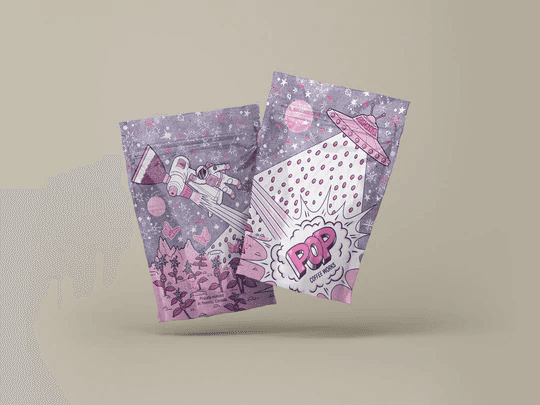Th3rdwave Directories
Cafés
Roasters
Coffees
Guides
Awards
Th3rdwave Coffee Club
Subscription
Gift subscription
Current edition
Past editions
Shop
Advent Calendar
Coffee games
Th3rdwave Wallet
Loyalty cards
Gift cards
Th3rdwave for cafés
Th3rdwave for roasters
Get free coffee
Chelba
Yirgacheffe is part of the Sidamo region in Ethiopia; however it's considered its own recognized micro-region due to the unique coffee profile produced on its territory. The Yirgacheffe region is known to have thick vegetation, healthy soil, and high elevations.
This coffee is sourced from 460 farmers organized around the Chelba washing station in Yirgacheffe. Each farm averages 1.6 hectares of coffee, and most of them also produce enset—a fruit-less relative of the banana tree whose pulp is transformed into a staple starch in the area.
At Chelba, natural processed coffees are typically sorted by hand on arrival to the processing site and then taken directly to raised beds to fully dry, a process that takes about 21 days. This particular lot however received a unique twist on the traditional natural: fresh cherry is first vacuum-sealed in plastic bags for 120 hours, in an environment deprived of oxygen and increasingly pressurized by the carbon dioxide emitted in the fermentation of the fresh fruit. Once the vacuum fermentation is complete, the cherry, now pale yellow from loss of pigment, is transferred directly to raised beds to sun-dry for 15-18 days until the moisture is reduced.
The resulting cup reminds us of guava, chocolate, and plum.
This coffee is sourced from 460 farmers organized around the Chelba washing station in Yirgacheffe. Each farm averages 1.6 hectares of coffee, and most of them also produce enset—a fruit-less relative of the banana tree whose pulp is transformed into a staple starch in the area.
At Chelba, natural processed coffees are typically sorted by hand on arrival to the processing site and then taken directly to raised beds to fully dry, a process that takes about 21 days. This particular lot however received a unique twist on the traditional natural: fresh cherry is first vacuum-sealed in plastic bags for 120 hours, in an environment deprived of oxygen and increasingly pressurized by the carbon dioxide emitted in the fermentation of the fresh fruit. Once the vacuum fermentation is complete, the cherry, now pale yellow from loss of pigment, is transferred directly to raised beds to sun-dry for 15-18 days until the moisture is reduced.
The resulting cup reminds us of guava, chocolate, and plum.
Yirgacheffe is part of the Sidamo region in Ethiopia; however it's considered its own recognized micro-region due to the unique coffee profile produced on its territory. The Yirgacheffe region is known to have thick vegetation, healthy soil, and high elevations.
This coffee is sourced from 460 farmers organized around the Chelba washing station in Yirgacheffe. Each farm averages 1.6 hectares of coffee, and most of them also produce enset—a fruit-less relative of the banana tree whose pulp is transformed into a staple starch in the area.
At Chelba, natural processed coffees are typically sorted by hand on arrival to the processing site and then taken directly to raised beds to fully dry, a process that takes about 21 days. This particular lot however received a unique twist on the traditional natural: fresh cherry is first vacuum-sealed in plastic bags for 120 hours, in an environment deprived of oxygen and increasingly pressurized by the carbon dioxide emitted in the fermentation of the fresh fruit. Once the vacuum fermentation is complete, the cherry, now pale yellow from loss of pigment, is transferred directly to raised beds to sun-dry for 15-18 days until the moisture is reduced.
The resulting cup reminds us of guava, chocolate, and plum.
This coffee is sourced from 460 farmers organized around the Chelba washing station in Yirgacheffe. Each farm averages 1.6 hectares of coffee, and most of them also produce enset—a fruit-less relative of the banana tree whose pulp is transformed into a staple starch in the area.
At Chelba, natural processed coffees are typically sorted by hand on arrival to the processing site and then taken directly to raised beds to fully dry, a process that takes about 21 days. This particular lot however received a unique twist on the traditional natural: fresh cherry is first vacuum-sealed in plastic bags for 120 hours, in an environment deprived of oxygen and increasingly pressurized by the carbon dioxide emitted in the fermentation of the fresh fruit. Once the vacuum fermentation is complete, the cherry, now pale yellow from loss of pigment, is transferred directly to raised beds to sun-dry for 15-18 days until the moisture is reduced.
The resulting cup reminds us of guava, chocolate, and plum.
Coffee origin
Country
Ethiopia
Region
Yirgacheffe
Variety
heirloom
Altitude
1893 - 1896 m
Farm
460 farmers
Producer
Chelba Washing Station
Process
anaerobic natural
Tastes like
🍈
guava
🍫
chocolate
🍑
plum
Community reviews
😵💫
1.0 Very Disappointing
1 Review
Recipes

AeroPress by Drop Coffee
AeroPress

Chemex By Blue Bottle
Chemex

Hario V60 by Ritual Coffee Roasters
Pour over
Check out more in the App



